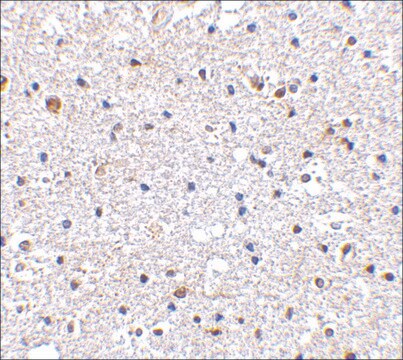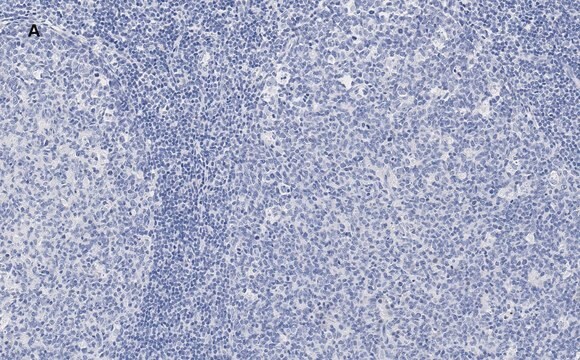FCABS352A4
Milli-Mark® Anti-Nanog-Alexa Fluor 488 Antibody, NT
Milli-Mark®, from rabbit
Sinónimos:
Homeobox transcription factor Nanog, Nanog homeobox
About This Item
Productos recomendados
biological source
rabbit
Quality Level
conjugate
ALEXA FLUOR™ 488
antibody form
affinity isolated antibody
antibody product type
primary antibodies
clone
polyclonal
species reactivity
human
species reactivity (predicted by homology)
mouse (based on 100% sequence homology), rat (based on 100% sequence homology)
manufacturer/tradename
Milli-Mark®
technique(s)
flow cytometry: suitable
isotype
IgG
NCBI accession no.
UniProt accession no.
shipped in
wet ice
target post-translational modification
unmodified
Gene Information
human ... NANOG(79923)
General description
NANOG may be useful in the immunohistochemical diagnosis of tumors. NANOG is expressed in germ cells of the fetus and in some germ cell tumors of the gonads and central nervous system (CNS).
Specificity
Immunogen
Application
Stem Cell Research
Pluripotent & Early Differentiation
Quality
Target description
Physical form
Storage and Stability
Analysis Note
2102 Ep cells
Legal Information
Disclaimer
¿No encuentra el producto adecuado?
Pruebe nuestro Herramienta de selección de productos.
Storage Class
12 - Non Combustible Liquids
wgk_germany
WGK 2
flash_point_f
Not applicable
flash_point_c
Not applicable
Certificados de análisis (COA)
Busque Certificados de análisis (COA) introduciendo el número de lote del producto. Los números de lote se encuentran en la etiqueta del producto después de las palabras «Lot» o «Batch»
¿Ya tiene este producto?
Encuentre la documentación para los productos que ha comprado recientemente en la Biblioteca de documentos.
Nuestro equipo de científicos tiene experiencia en todas las áreas de investigación: Ciencias de la vida, Ciencia de los materiales, Síntesis química, Cromatografía, Analítica y muchas otras.
Póngase en contacto con el Servicio técnico




